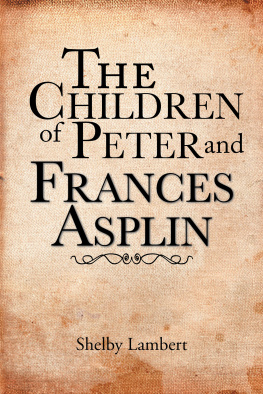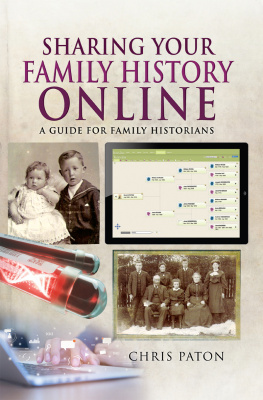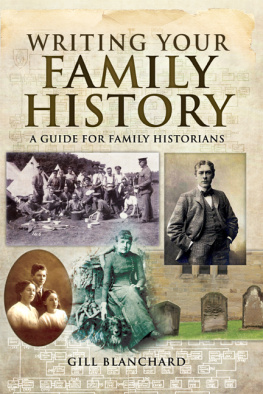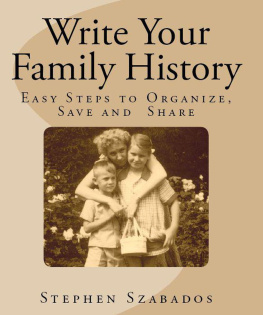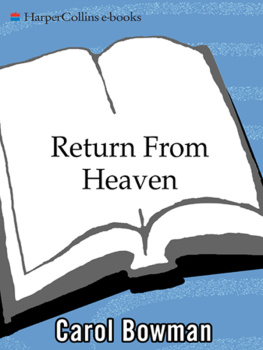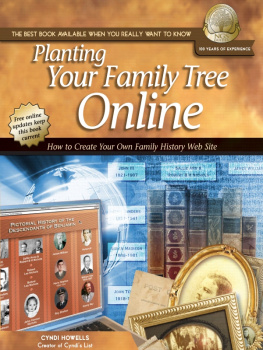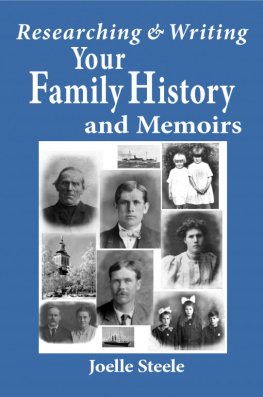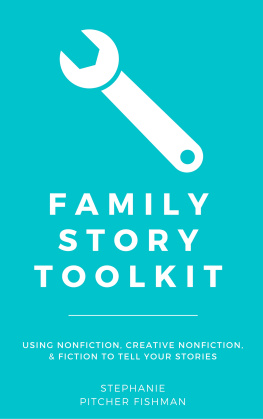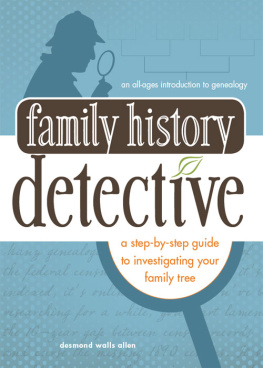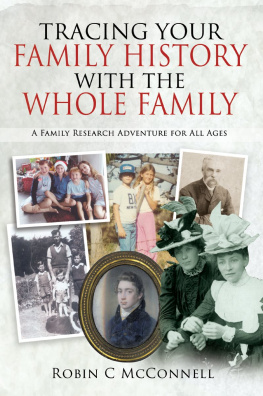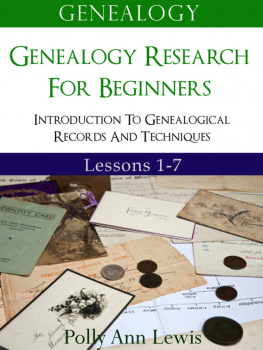THE CHILDREN OF
PETER AND FRANCES ASPLIN
SHELBY LAMBERT
Copyright 2017 by Shelby Lambert.
ISBN: | Softcover | 978-1-5245-8731-4 |
eBook | 978-1-5245-8732-1 |
All rights reserved. No part of this book may be reproduced or transmitted in any form or by any means, electronic or mechanical, including photocopying, recording, or by any information storage and retrieval system, without permission in writing from the copyright owner.
Any people depicted in stock imagery provided by Thinkstock are models, and such images are being used for illustrative purposes only.
Certain stock imagery Thinkstock.
Rev. date: 01/14/2022
Xlibris
844-714-8691
www.Xlibris.com
758083
TABLE OF CONTENTS
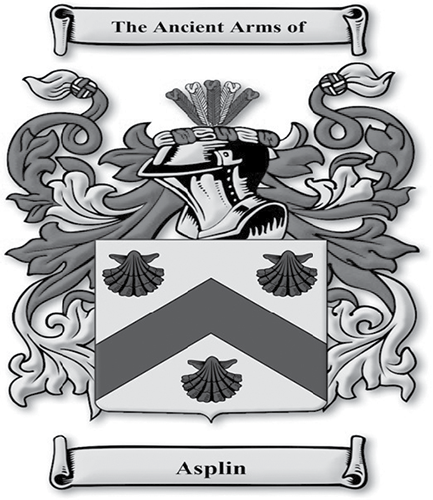
So you might ask the question: What started my interest in family history? Perhaps it has something to do with the fact that I came from a very small immediate family. Growing up, almost everyone I knew had grandparents, even great-grandparents, plenty of aunts and uncles on both sides of their family. Birthday and holiday celebrations for their families were big events. My situation was very diffe rent.
I dont know what its like to have a grandmother, since my maternal grandmother passed away before I was born, and my paternal grandmother died when I was only 3. Both my grandfathers held on a little longer, but I lost my last grandparent when I was just out of college (ironically, my grandfather, Ray Asplin, who I would love to tell about all that I found regarding his family if he was still here. Im sure he knows now, and is quite surpr ised!)
Then one Christmas, I discovered a family Bible one of those big ones with a genealogy section between the Old and New Testaments. Even with my parents limited knowledge, they listed names of great=grandparents and even great-great grandparents, many living many decades before I was born, but some who died just a few short years before I was born. In my childhood imagination, I would pretend they were still alive and visiting us for Christmas, making me feel less a lone.
Like all children, I still had some growing up to do. Other interests took up much of my time, so any thought of genealogy was put on the back burner for many years. But it was still there, rearing its ugly head to remind me every time a friend would tell me about all the aunts and uncles spending the holidays with them, and how many cousins they met for the first time at their family reunions. So I have set out here to create my own family reunion for my mothers paternal family one that will hopefully unite family both here in the United States and Eng land.
At first, I thought the Asplin family would be difficult to research, because no one in my family had attempted to carry through with it before. After all, how does one begin to sort out a family where a 3x great grandfather has a different surname than the rest of his half-siblings? But as I became more persistent in my detective work, things began to make more sense to me. Even my own grandfather, with all the incomplete, disjointed information he had while he was alive, had difficulty putting all the puzzle pieces together. All those pieces of the puzzle came together for this book.
As it turned out, putting all the information together, and finding where everything fit for this part of my family tree, was much easier than it was for other parts of my family tree. Of course, dealing with such a rare surname (in this case, my mothers maiden name) certainly helps. Knowing, for example, that there was only ever one Peter Asplin (or its variations as Aspland and Aspling) born circa 1776 in England, who also had a daughter named Eleanor (or Ella and Ellen, as she was also called) born circa 1809-10. And that she and her husband, Thomas, named all their children after their parents and siblings, was all the proof I needed that I was on the right track, and that what I was dealing with was more than just coincid ence.
Some questions still remain that I may never fully have the answers to. For example, why so many people migrated from Cambridgeshire to Missouri at a time when reforms had taken place in England that promised better times for the English people, and immigration to the United States was at an all time low just prior to the great exodus from Ireland and the potato famine that took place in the 1840s.Or why a newly-remarried, middle-aged man would emigrate with his wife, youngest son, and stepson, but leave the rest of his family behind in England, with only his youngest daughter to follow him to Missouri years later, with her husband and children that he never met or got to witness their marriage or bi rths.
Nevertheless; having been satisfied with what Ive discovered so far, it would be all too easy for me to congratulate myself for all the information Ive found, matching things up with very little contradiction, many things that I surmised might have happened proving to be true, as if it were meant for only me to find out. Of course, an academic background in history and world geography, helps when ascertaining correct lineage and the historical relevance of the times playing a role in the events taking place in the lives of those concerned here. Not to mention, the natural talent I possess for writing in being able to organize my thoughts into a sequential, coherent s tory.
But I would be remiss if I didnt acknowledge certain family members. First of all, my mother, who brought me leads and dropped several hints along the way, as well as permitting me to have access to her computer, which proved to be invaluable. The 15 years I spent on genealogy, findmypast.org and ancestry.com, gaining new insight as it became available, as it was only in the last few of those years I obtained more information specific to the family Im researching. But there was also two other websites, IGI/familysearch.org through the LDS church, and the Cambridgeshire Family History Societyone of the only counties in England that allows free public access to its baptismal and marriage records in the years between 1801 and 1837which had information unavailable even to the most popular genealogy websites, without which much of this book wouldnt have been poss ible.
I also want to thank my sister, Amy, for the book on English history that she gave me as a gift, which helped me understand the nature of English society before our ancestors departure. Supplementing that book with certain websites I found that dealt with the Fenland area of England, and East Anglia, in general, broadened my knowledge of the character of the land and the people who came from that particular areawhich, in turn, is the character of the family my mother came from.
Most importantly, this book is dedicated to my grandfather, Ray Asplin, whose notes gave me a head start and encouraged me to pick up where he left off after his passing. When I asked him once what kind of family the Asplins were, he told me they were mostly farmers and ranchers, but not many professionals. After three generations in the United States, my grandfather was the first in his Asplin family to attend and graduate from college. Certainly, my own research has found much of what he said to be true of his familyboth in the United States and Eng land.
The Asplin story is one of triumph. Yes, there were many people of humble origins and means. But, by and large, they were a strong family with good morals, who raised their children well. People who looked for opportunities to better themselves. Many who lived a long life at a time when the average life span was under 60 years of age.
Next page
